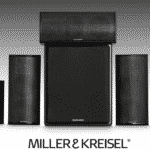
Khushali Patel, Country Manager, John Cullen Lighting and a member of Women in Lighting India, brings a wealth of experience with her background in interior design and nine years in the lighting industry. Her recent role at John Cullen Lighting has further enhanced her ability to create smart innovative and sustainable lighting solutions.
In discussion with Smart Home World, she shares her insights on the growing demand for bespoke smart lighting and the challenges of integrating modern technology into heritage properties and more…
Congratulations on John Cullen Lighting achieving a 43-year milestone, tell us about your journey so far.
John Cullen Lighting has held a special place in my heart. My introduction to this brand began at a dealer’s office, and I’m proud to have been associated with it for the past seven months. This experience has been incredibly enriching, providing invaluable knowledge, extensive training, and outstanding mentorship from my director and colleagues.
Transitioning from an interior design background to a technically proficient professional with nine years of lighting experience has been a remarkable journey. As the Country Manager for John Cullen Lighting and a proud member of Women in Lighting India, I find great fulfilment in representing such a discreet and exceptional brand for my beautiful country, India.
Can you describe your approach to providing smart lighting solutions for different types of projects (e.g., residential, commercial, and heritage properties?
Smart lighting solutions refer to advanced lighting systems that leverage technology to enhance control, efficiency, and user experience. At John Cullen Lighting, we are passionate about smart lighting solutions, especially through our collaboration with Lutron, a leading automation control company.
Our approach focuses on delivering user-friendly solutions that create the perfect ambiance for any occasion while reducing your carbon footprint. By utilising smart technology, we ensure that our lighting systems are both efficient and adaptable, enhancing your space while promoting sustainability.
What key factors do you consider when designing a bespoke intelligent lighting control solution for a high-end residential project?
We intelligently manage multiple circuits of both decorative and architectural lighting to create inviting and comfortable living spaces. These carefully balanced scenes can be easily recreated at the touch of a button, reducing wall clutter. The automated lighting systems empower users to set the mood while simultaneously saving energy, thereby lowering their carbon footprint. By utilising smart technology and intelligent programming, you can achieve the perfect ambiance for any occasion, all while contributing to sustainability. We place a strong emphasis on sustainability, not only in our lighting solutions but also through initiatives like Sustainability Week programs for our internal team.
What challenges do you encounter when integrating smart lighting solutions into listed buildings and heritage structures while maintaining their historical integrity? Which brands do you recommend, and can you provide details for our professional readers?
Lighting design for a listed building requires a delicate balance between preserving historical integrity and enhancing usability while incorporating smart lighting solutions. Our team prioritises historical sensitivity by collaborating closely with heritage authorities, embracing creative solutions to achieve a design that honours the building’s past while offering modern functionality and aesthetics.
To ensure our approach aligns with the building’s historical significance, we assess which elements will be retained or protected from development. We then coordinate with the project team, heritage consultants, and the client to create a lighting scheme that adheres to regulations and guidelines safeguarding the heritage status while also meeting the client’s needs for modern lifestyle flexibility within the property.
What best practices do you follow when incorporating smart controls that enhance the aesthetic and overall ambiance of a home theatre?
The variety of lighting layers in this room truly enhances the sense of space. All circuits are controlled via a pre-set scene, allowing for a versatile environment suitable for both watching movies and hosting parties. The lighting in the cinema room is designed to soften the atmosphere and is equipped with the best possible automation solutions.
Incorporating a coffer lit with the fibre optics can significantly enhance a home theatre, as it avoids puncturing any acoustic ceilings, thereby minimising noise and vibrations. Illuminating the coffer creates a warm, shadow-free light, eliminating unwanted reflections or hot spots on the screen. To foster intimacy in a larger room, consider integrating fibre optics and automation controls, adding a dramatic flair to the space.
What effective strategies can be employed to create customisable lighting experiences in bars and restaurants? Could you share a case study and elaborate on the brands you selected and the advantages they offer?
Our lighting design team customises each scheme to match the restaurant’s style, whether it’s for a leisurely tasting menu or a fast-paced service, ensuring that key focal points—such as artwork and architectural features—are highlighted. We prioritise flexibility in the lighting design to seamlessly transition across different service times, incorporating excellent dimming control that remains unnoticed by guests.
We create distinct scenes for breakfast, lunch, drinks, and dinner, allowing for smooth adjustments that maintain intimacy without drawing attention. To ensure maximum visual comfort, all specified fixtures are chosen for their exceptional glare control. We also focus on creating continuity between transitional spaces, such as from the dining area to the washroom and back of house.
Our design approach divides the restaurant into various zones based on seating arrangements, the bar area, and special features. Each zone may require tailored lighting treatments to enhance different customer experiences. Task lighting is carefully considered to provide adequate illumination for reading menus, ensuring guests can enjoy their meals comfortably.
Restaurant lighting design plays a critical role in establishing the desired ambience, enhancing the dining experience, and complementing the overall concept of the restaurant. It should create an instant atmosphere that feels effortless, like a magical illusion, allowing guests to focus on their experience without being aware of the lighting itself.
Which brands of smart lighting products do you prefer to work with, and what makes them stand out?
John Cullen Lighting is an independent brand that typically utilises smart drivers or automation systems such as Lutron or Rako when designing optimal solutions for our clients. Additionally, we’re excited to introduce a new product that combines light and sound. In collaboration with the brand Zuma, we have developed a unique, fully recessed compact speaker that delivers immersive audio and lighting
Can you share some of your most notable projects, where you successfully implemented smart lighting controls?
99 percent of our projects incorporate smart lighting controls, reflecting our commitment to current trends. With over 250 projects completed in the region, our controls can be seen in luxury villas in exclusive neighbourhoods throughout key cities in the Middle East.
In addition, they also grace numerous restaurants, showcasing the company’s versatility and commitment to delivering exceptional results.
In your experience, what common misconceptions do clients have about smart lighting controls, and how do you address them?
Our clients often express concerns about their unfamiliarity with the technology and its user-friendliness. They also perceive smart lighting as expensive, not realising that it’s a one-time investment that ultimately offers unparalleled convenience. Additionally, many think smart lighting only provides basic functions like on/off and dimming, unaware of its extensive features, including scene setting, scheduling, and integration with other smart home devices. We hope to change these misconceptions and encourage greater adoption of lighting control systems
Can you discuss the importance of scalability in your lighting control solutions? How do you adapt these systems for different project sizes?
John Cullen is excited to announce the launch of our new residential lighting controls service. Traditionally, lighting design, fixtures, and controls are managed by separate companies, which can lead to complications along the way. To simplify the process, we now offer a comprehensive end-to-end lighting solution all under one roof.
Our new residential lighting controls package includes tailored project solutions and in-house technical support, providing a scalable and managed approach that brings peace of mind. Whether you’re lighting a single room or an entire house, we can create a customised solution encompassing lighting design, products, control system design, and control products, ensuring you enjoy trouble-free, flicker-free lighting.
From retrofits and upgrades to entirely new systems, you can trust us to deliver the best bespoke solution using the latest digital technology that interfaces seamlessly with your smartphone and tablet. Whether you need a simple lighting control solution for a single room or a sophisticated networked system for multi-room applications, our comprehensive offerings cover it all. Our systems utilise open protocols for easy integration with your AV setup if desired
What role does sustainability play in your lighting designs, especially concerning energy efficiency and carbon footprint reduction?
It’s in our DNA to continuously enhance the functionality, sustainability, and aesthetics of our products, which we reflect in our design practices. We are deeply aware of our environmental responsibilities and the impact of manufacturing on our planet. To this end, we’ve introduced a new sustainable clip-fit assembly mechanism that allows for a truly modular design, eliminating the need for adhesives. This innovation significantly enhances our ability to repair, reuse, and recycle our products.
Beyond simply switching to more energy-efficient light sources, we must also consider lighting layouts, fixture selection, and installation controls. Our goal is to minimise or entirely prevent the impact of lighting on wildlife by employing discreet, non-invasive solutions.
Moreover, effective lighting controls can greatly enhance the energy efficiency and environmental footprint of any installation. At a minimum, all lighting should be linked to a photocell that detects natural light levels, automatically turning off the lights when adequate daylight is available, ensuring that they’re not in use during the day.
What future trends do you anticipate in the smart lighting industry, and how is John Cullen Lighting preparing to meet these changes?
As mentioned earlier, we have begun offering a comprehensive end-to-end solution, from design to supply, and are now collaborating with leading lighting control brands to provide the best solutions for our clients. Looking ahead, we are committed to developing sustainable products, including enhancing our existing lines, such as the Polespring series, to make them more eco-friendly.
Our approach also emphasises human-centric lighting, ensuring our designs support well-being and productivity. During Sustainable Week, our team engages in various programs and activities to promote sustainability. Additionally, we are making strides toward standardisation and interoperability among smart lighting products, allowing consumers to easily mix and match devices from different manufacturers. We are also exploring partnerships with other smart control manufacturers to advance wireless control systems.















